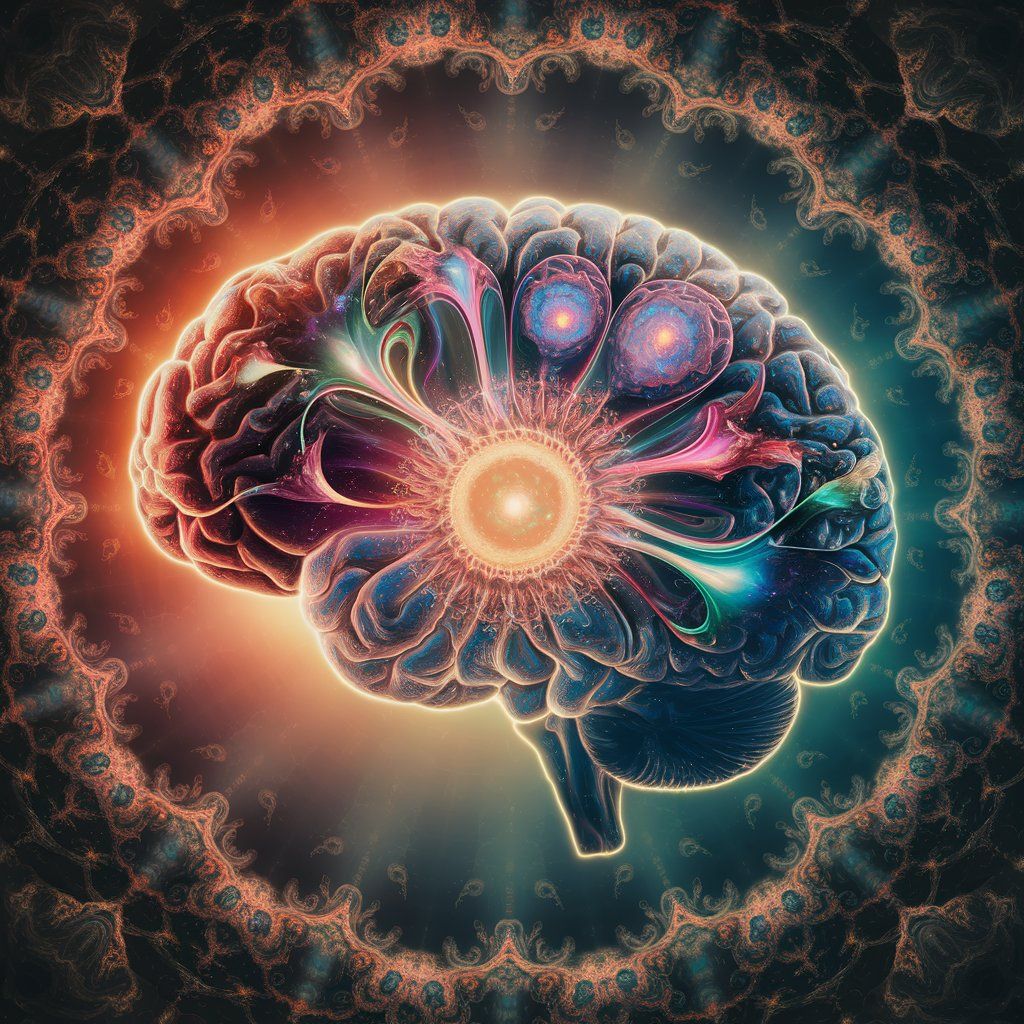
At the heart of this revolution lies the fascinating world of mirror neurons, which may hold the key to enhancing empathy and deepening the therapeutic experience in psychedelic interventions (Carhart-Harris & Friston, 2019).
Understanding Mirror Neurons in Psychedelic Contexts
Mirror neurons, first discovered in the 1990s, fire both when an individual performs an action and when they observe someone else performing the same action (Gallese et al., 1996). In the context of psychedelic-assisted therapies, these neurons may play a crucial role in amplifying empathy, emotional resonance, and the overall therapeutic alliance.
Recent research suggests that psychedelics like psilocybin and MDMA can enhance emotional empathy and increase activity in brain regions associated with social cognition (Preller et al., 2018). When combined with our understanding of mirror neurons, this presents exciting possibilities for deepening therapeutic connections and outcomes.
The Role of Empathy in Psychedelic-Assisted Therapies
Empathy is a cornerstone of effective psychedelic-assisted therapies. It allows therapists to:
1. Create a safe, supportive environment for patients during altered states of consciousness.
2. Intuitively understand and respond to patients' experiences in real-time.
3. Help patients integrate their psychedelic experiences into meaningful insights and behavioral changes.
Mirror neurons may enhance these empathetic processes by allowing therapists to more deeply resonate with their patients' emotional states and experiences.
Strategies for Leveraging Mirror Neurons in Psychedelic-Assisted Therapies
1. Enhanced Pre-Session Preparation:
- Practice: Engage in empathy-building exercises focusing on mirror neuron activation before sessions.
- Application: This can prime therapists to be more attuned to patients' emotional states during the psychedelic experience.
2. Mindful Presence During Sessions:
- Practice: Cultivate a state of open, non-judgmental awareness during psychedelic sessions
- Application: This heightened presence can enhance mirror neuron activity, allowing for deeper empathetic resonance with patients.
3. Non-Verbal Attunement:
- Practice: Pay close attention to patients' body language and facial expressions.
- Application: Mirror neurons can help therapists intuitively understand and respond to non-verbal cues, which are often amplified during psychedelic experiences.
4. Emotional Mirroring:
- Practice: Consciously attune to the emotional tenor of the patient's experience.
- Application: This can create a sense of shared experience, deepening the therapeutic alliance.
5. Integration-Focused Empathy:
- Practice: Use mirror neuron-enhanced empathy to help patients integrate their experiences post-session.
- Application: This can lead to more meaningful insights and lasting therapeutic outcomes.
Empathy as the Catalyst for Transformation
The integration of mirror neuron research with psychedelic-assisted therapies represents a powerful frontier in psychiatric care. By consciously leveraging these neurological mechanisms, practitioners can create deeply empathetic, transformative experiences for their patients. Here's how to take action:
❒ Deepen Your Understanding: Invest time in studying the intersection of mirror neurons and psychedelic therapy.
❒ Enhance Your Empathy: Practice empathy-building exercises regularly, focusing on mirror neuron activation.
❒ Collaborate and Share: Engage with colleagues to share experiences and best practices in this emerging field.
❒ Advocate for Research: Support and participate in research exploring the role of mirror neurons in psychedelic-assisted therapies.
❒ Prioritize Integration: Focus on using enhanced empathy to support patients in integrating their psychedelic experiences into daily life.
By harnessing the power of mirror neurons in psychedelic-assisted therapies, we have the potential to revolutionize mental health treatment. This approach not only deepens the therapeutic experience but also paves the way for more profound, lasting healing. As we stand at the forefront of this exciting field, let's embrace the transformative potential of empathy-enhanced, neuroscience-informed psychedelic therapies.
References
Carhart-Harris, R. L., & Friston, K. J. (2019). REBUS and the anarchic brain: Toward a unified model of the brain action of psychedelics. Pharmacological Reviews, 71(3), 316-344.
Gallese, V., Fadiga, L., Fogassi, L., & Rizzolatti, G. (1996). Action recognition in the premotor cortex. Brain, 119(2), 593-609.
Preller, K. H., Pokorny, T., Hock, A., Kraehenmann, R., Stämpfli, P., Seifritz, E., Scheidegger, M., & Vollenweider, F. X. (2016). Effects of serotonin 2A/1A receptor stimulation on social exclusion processing. Proceedings of the National Academy of Sciences, 113(18), 5119-5124.
